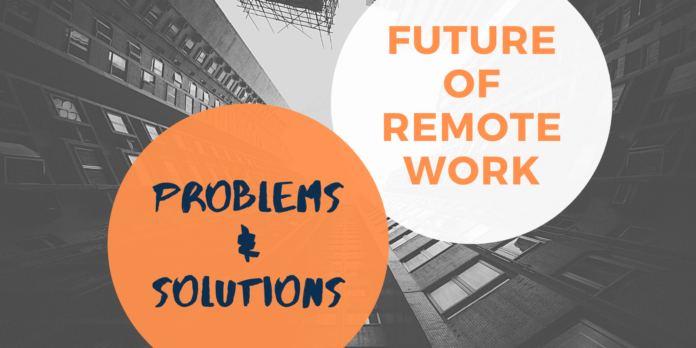It’s doubtful that the trend toward remote work will get back to normal. Distance and virtual labor, on the other hand, limit what managers may see, particularly when employees fail to meet expectations. Why an employee isn’t making the required progress is obscured by minimal interactions and no drop-ins. Managers require innovative methods for communicating with underperforming staff while maintaining productivity.
Interesting Magazine How Business Should Prepare for the Next Pandemic Magazine
It’s all too simple to conclude that underperforming remote workers aren’t putting in enough time. However, in a distant setting, this is frequently only a part of the cause. Other root problems and solutions should be considered by bosses and discussed with underperformers, including:
Future of Remote Work – Problems and Solutions
Employee Communication
Some remote employees do excellent work but fail to adequately communicate their progress. What used to be a rather visible workplace now relies on regular, well-articulated updates—a talent or habit that many people lack. They aren’t performing poorly; they are underreporting. Try to communicate and get the best from each employee during their remote work.
Keeping in Touch
Remember that a distant underperformer can’t just drop in to see how things are going. It is your responsibility as their manager to keep in touch with them on a frequent basis and keep them informed. Don’t make the mistake of assuming that no news is good news. When you give an employee genuine feedback and don’t hear back, they may believe you’re ignoring them because you’ve written them off, and their performance may suffer as a result. Make it a point to meet on a frequent basis to discuss their development.
Make it clear how you want them to keep you updated on their progress if you’ve asked them to do so. Tell them that if they prefer email but you’re drowning in it and respond better to texts or Slack messages. Don’t rely solely on video meetings, as the lack of actual eye contact might make it appear as if you’re receiving nonverbal cues when you’re not.
Plan to have at least part of your encounters over the phone and listen carefully if you’re concerned that you’re not getting a good read on your team member’s mood. The tone of their speech may reveal further information about what needs to be addressed. It’s difficult to deal with a remote employee who isn’t performing well, especially when you can’t sit down and talk about it. However, utilising specific, tried-and-true strategies to assist them in improving their performance will boost not only their performance but also their relationship with you.
Also read COVID19 Impact: Top 5 Areas to Check
Organising
Perhaps your employee is unable to work from home due to a lack of structure. Focus can be harmed by sloppy browsing habits, sharing workplace with children, spouses, and pets, etc. Working from home necessitates keeping clear lines between business and home. This discipline is imposed from the outside in the workplace. Many people struggle with successful self-management at home. So, organize well and provide a better workplace at home for the employees working under you.
Disconnection
Some people thrive in the office, but with no in-person interactions, they wilt at home. When working alone, the creative juices that flow during impromptu lunchtime or whiteboard brainstorming sessions might dry up, resulting in boredom, stagnation, and even melancholy. Have a twice-weekly office hour for reports to discuss minor issues. These discussions keep you up to date and turn into a hub for information sharing among co-workers. The idea is to digitally reproduce the kind of hallway chats that encourage innovative thinking and result in more efficient, friction-less work.
Managing a Crisis
People can go through a grieving phase during disasters, like the Covid-19 pandemic, which can leave them despondent and demotivated. Personal crises can have similar repercussions, such as working from home while caring for a sick family member.
Managers must explain effective responses after determining the root reason for underperformance (if, of course, the problem is the remote environment rather than a lack of effort or expertise).
Crisis is a crisis for everyone – the way we investigate to find solutions & benefits is different. Be proactive, manage yourself & people working with you for a better work environment.
Final Thoughts
A positive attitude and excellent relationships open the doors to advancement in the workplace. Working remotely has the downside of making it more difficult to highlight professional accomplishments. Employees will need to put in extra effort in 2021 & 2022 to increase their virtual involvement to have access to new chances. Employee involvement is significantly more difficult to describe and identify in a remote workplace when employees collaborate mostly via email. Employees who work from home can stand out as leaders by attending virtual events, engaging in online meetings, and maintaining a high level of excitement.
Interesting Read Technologies that will Transform Human Life in 2025



